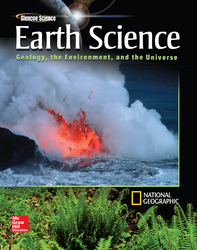1 A) tidal range B) upwelling current C) tsunami D) seiche 2 A) primary wave B) secondary wave C) surface wave D) longitudinal wave 3 <a onClick="window.open('/olcweb/cgi/pluginpop.cgi?it=gif::::/sites/dl/free/0078746361/561690/146_wmap_ls_190c.gif','popWin', 'width=NaN,height=NaN,resizable,scrollbars');" href="#"><img valign="absmiddle" height="16" width="16" border="0" src="/olcweb/styles/shared/linkicons/image.gif"> (45.0K)</a> A) 30°S, 60°W B) 0°N, 180°W C) 60°N, 120°E D) 0°N, 30°W 4 <a onClick="window.open('/olcweb/cgi/pluginpop.cgi?it=gif::::/sites/dl/free/0078746361/561690/117_stresss_ss_190c.gif','popWin', 'width=NaN,height=NaN,resizable,scrollbars');" href="#"><img valign="absmiddle" height="16" width="16" border="0" src="/olcweb/styles/shared/linkicons/image.gif"> (6.0K)</a>
A) at the elastic limit B) at the start of the stress C) at the failure point D) past the elastic limit 5 A) 1/10 times B) 10 times C) 100 000 times D) 100 times 6 A) divergent plate boundaries B) mid-ocean ridges C) rift valleys D) plate boundaries 7 A) amplitude of the largest wave B) the amount of damage C) the depth of the focus D) frequency of the largest wave 8 A) its P-wave B) amplitude of the largest wave C) frequency of the waves D) amount of damage 9 A) damage from the largest wave B) size of the largest wave C) wavelength of the waves D) frequency of the waves 10 A) iron and nickel B) hydrogen and iron C) nickel and silicon D) magnesium and silicon 11 A) S-waves refracted as they reached the outer core. B) S-waves intersected with P-waves at the core-mantle boundary. C) S-waves disappeared when they reached the outer core. D) S-waves sped up when they entered the outer core. 12 A) strain buildup only B) location of foci C) reoccurrence rates of earthquakes in an area and the rate of strain buildup D) magnitude of P-waves 13 A) cartography B) sedimentology C) geology D) seismology 14 A) seismograph B) seismometer C) GPS D) sonar 15 A) at Earth's inner core B) at the P-wave C) at the epicenter D) at the focus 16 A) reverse B) shear C) strike-slip D) normal 17 A) shear B) compression C) tension D) strain 18 A) tidal wave B) S-wave C) surface wave D) P-wave 19 A) wood B) concrete C) steel D) brick 20 A) water saturated soil or sand B) rocks and sand in the desert C) volcanic ash that gets mixed with melting snow D) topsoil in which crops are growing














